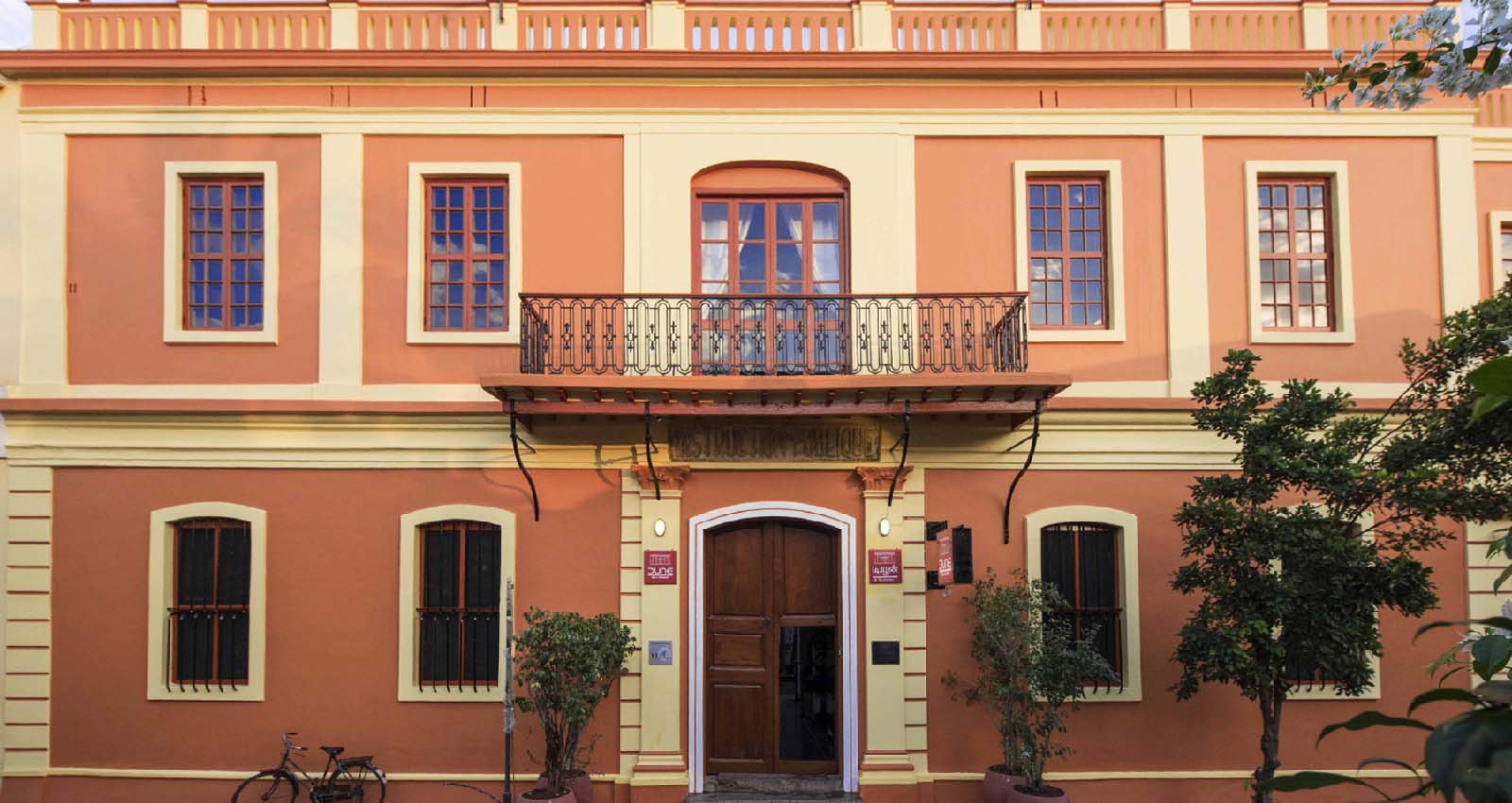Discover what to do in and around Puduchery
Explore the french colonial history of Puduchery
Some few words about Dune de L’Orient Story
Discover Francis Wacziarg
Puducherry offers a variety of exciting experiences, from spiritual learning at the Aurobindo Ashram and Auroville, to shopping in the street bazaars or at designer shops to cultural evenings in Alliance Francaise.
Puducherry
Puducherry, an ex-French colony with its quaint colonial houses and numerous restaurants. Puducherry offers a variety of exciting experiences, from spiritual learning at the Sri Aurobindo Ashram, to shopping in the street bazaars to cultural evenings in Alliance Française.
There is a wide variety of historical places to visit whilst in Pondicherry. These include the The Museum, the Botanical Gardens, the Bharathi Park, Romain Rolland library and the Sri Varadaraja Perumal Temple, which is considered to be the oldest Hindu temple in Pondicherry. A walk on the promenade beach is always a good idea as well!
One can also go on the Heritage Walk which is organised by INTACH (Indian National Trust for Art and Cultural Heritage).
Pondicherry is home to 18th and 19th century churches, which include: the Eglise Notre Dame de la Conception, the Church of the Sacred Heart of Jesus ,the Eglise Notre Dame des Anges, the Eglise Notre Dame de Lourdes and the Chapel of the Sisters of Cluny.
And during your exploration of the treasures of Pondicherry, do not miss to admire the buildings of the French Institute.
The Institut français de Pondicherry, created under the terms of a treaty to sell French settlements in India, was inaugurated on March 21, 1955. It was at its origin, under the impetus of its first director (Jean Filliozat), The study of Indian civilization, and particularly the history and religions of South India.
In the 1960s, an ecology department was created to collect information on the state and evolution of the environment in South India (vegetation, soils, climatic changes, etc.) with the Ghats One of the world’s 34 “hotspots” for biodiversity.
The creation of the Department of Social Sciences in the 1980s marked the evolution and dynamics of Indian society as a field of research at IFP.
The development of research and the need to support it with modern methodologies and instruments led to the creation of the Applied Informatics and Geomatics Laboratory (LIAG). The installation of LIAG as a common tool has greatly enabled the development of new research objects.
The Institute also has a library that houses collections specializing in IFP-specific research, and which is enriched over the years thank to a dynamic acquisition policy. It is open to the public within a framework set by IFP.
Auroville
Auroville is an experimental universal township for humanity, founded by Sri Aurobindo’s spiritual partner, Mirra Alfassa, aka The Mother. It is home to over 2500 people from over 55 nationalities! Only 15 minutes away from Pondicherry, it is a must visit.
At the center of Auroville lies the Matrimandir – the spiritual and geographic heart of the city. There is a meditation chamber within. It is described as a place of perfect peace and stilness, bathed in light refracted through a prism inserted in the topmost part of the dome.
The Peace area in which the structure is located has three main features: the Matrimandir itself with its twelve gardens, twelve petals and future lakes, an Amphitheater and a Banyan Tree.
Trips
Trips can be organised to Cuddalore, Chidambaram, Swamimalai, Karaikudi, Madurai etc… All of these places offer a unique insight into Tamil culture.
North
The port of Mahabalipuram was already known in the time of ancient Greece.
In the seventh century, during the reign of the Pallava dynasty, Mahabalipuram was an important port probably in communication with the Srivijaya in Indonesia and the Kingdom of Champa on the Indochinese peninsula.
However, if no port facility was found to date, the tsunami, a result of the earthquake of 26 December 2004, has revealed structures that could be linked to this activity.
The site includes a large number of Hindu monuments dedicated to Shiva, Vishnu, but also Krishna and the Mahabharata hero. The three principal monuments or groups of monuments are:
The Descent of the Ganges or The Penance of Arjuna:
The Descent of the Ganges is a bas-relief dating from the seventh century, probably the largest in the world. The sculptures that cover the entire surface of two huge rocks, 27 meters long and 9 meters high, depicts the course of the Ganges from heaven and the Himalayas as described in the Panchatantra.
The Temple of the Shore
The Shore Temple is a temple built in 700-728 by the Pallava king Rajasimha Narasimhavarman II (in) along the coast of the Bay of Bengal. This is one of the first temples built as opposed to temples carved in caves excavated in the cliffs.
The Five Ratha
The five Ratha (Pancha Ratha) – Yudhishthira (or Dharmaraja), Bhima, Arjuna, Draupadi and Nakula-Sahadeva – are monolithic monuments of different sizes and shapes excavated a small hill, sloping gently towards the south, South of the village.
The term ratha is incorrectly used here because it means “carriage” (see Puri), like those used in processions. The Ratha of Mahâbalipuram do not have a wheel, unlike the temple of Surya of Konarak which is in the form of a trolley with wheels, pulled by sculpted horses.
West
To the west, lies a magnificient archeological site, Gingee, an ancient fort set amongst a landscape of granite chaos.
Further west (50 km) is the town of Thiruvannamalai wich is famed for its very large and ancient temple and the sacred hill called Arunachala, symbolizing the element fire.
At the foot of this hill, lived one of the greatest seers of India, Ramana Maharshi.









